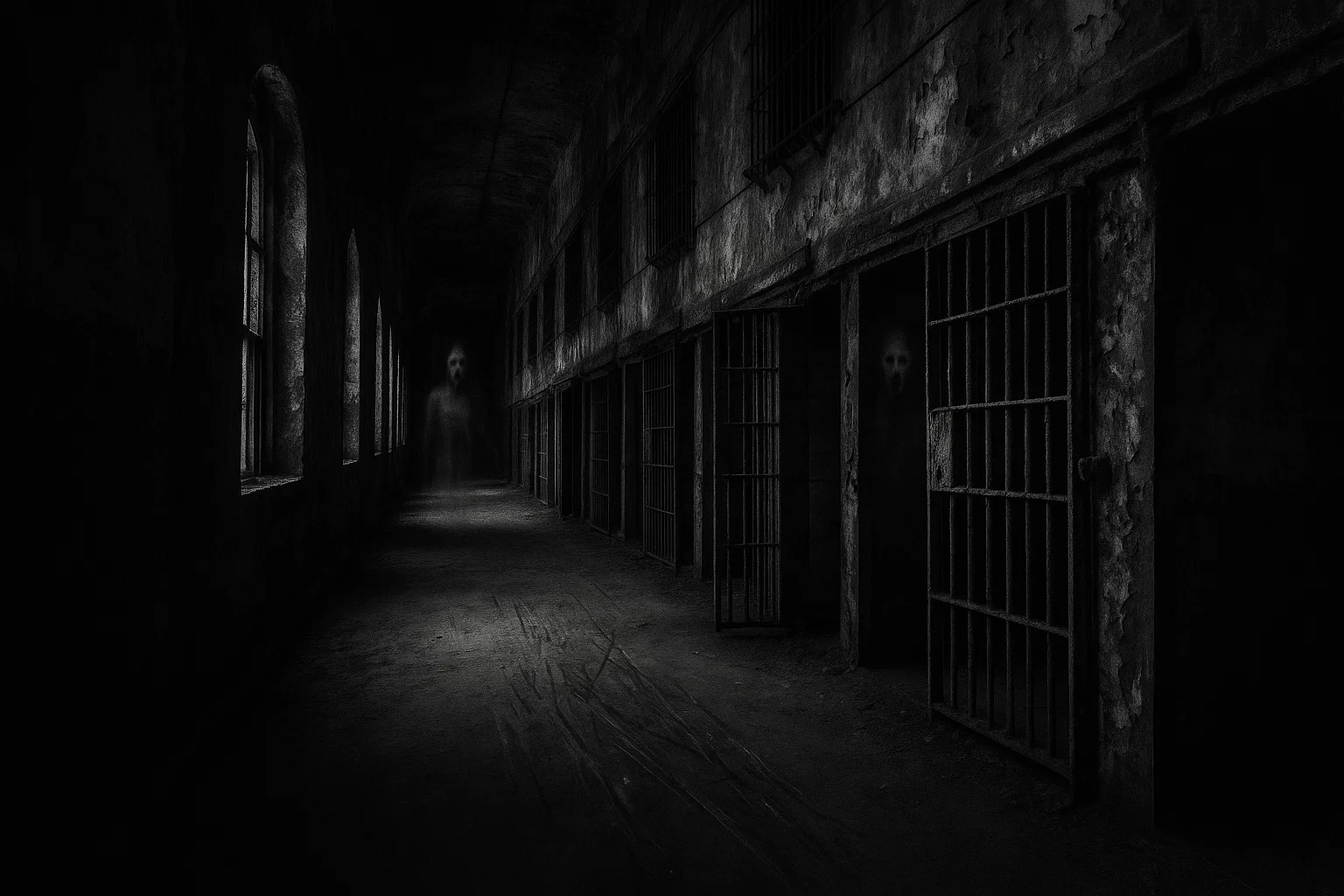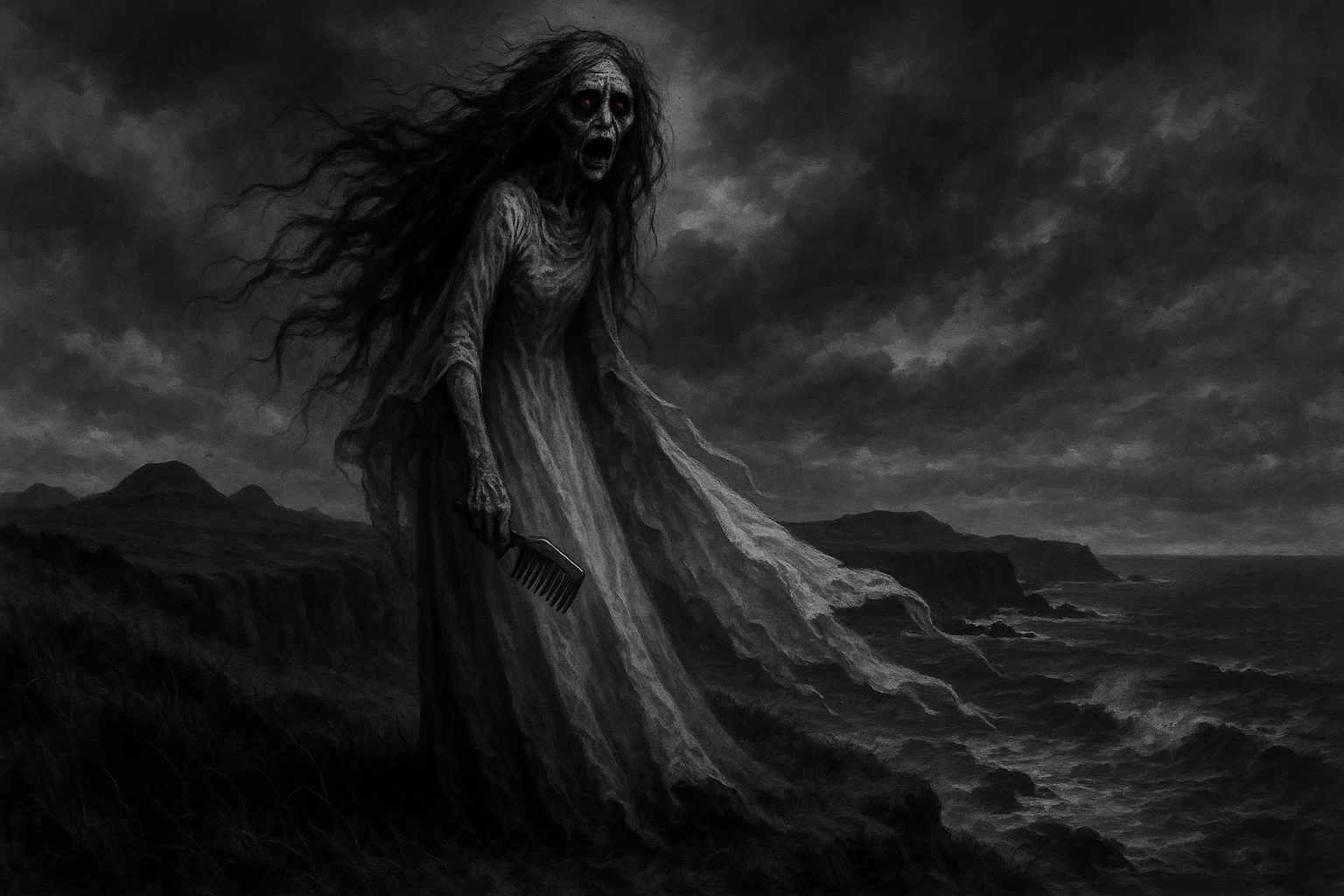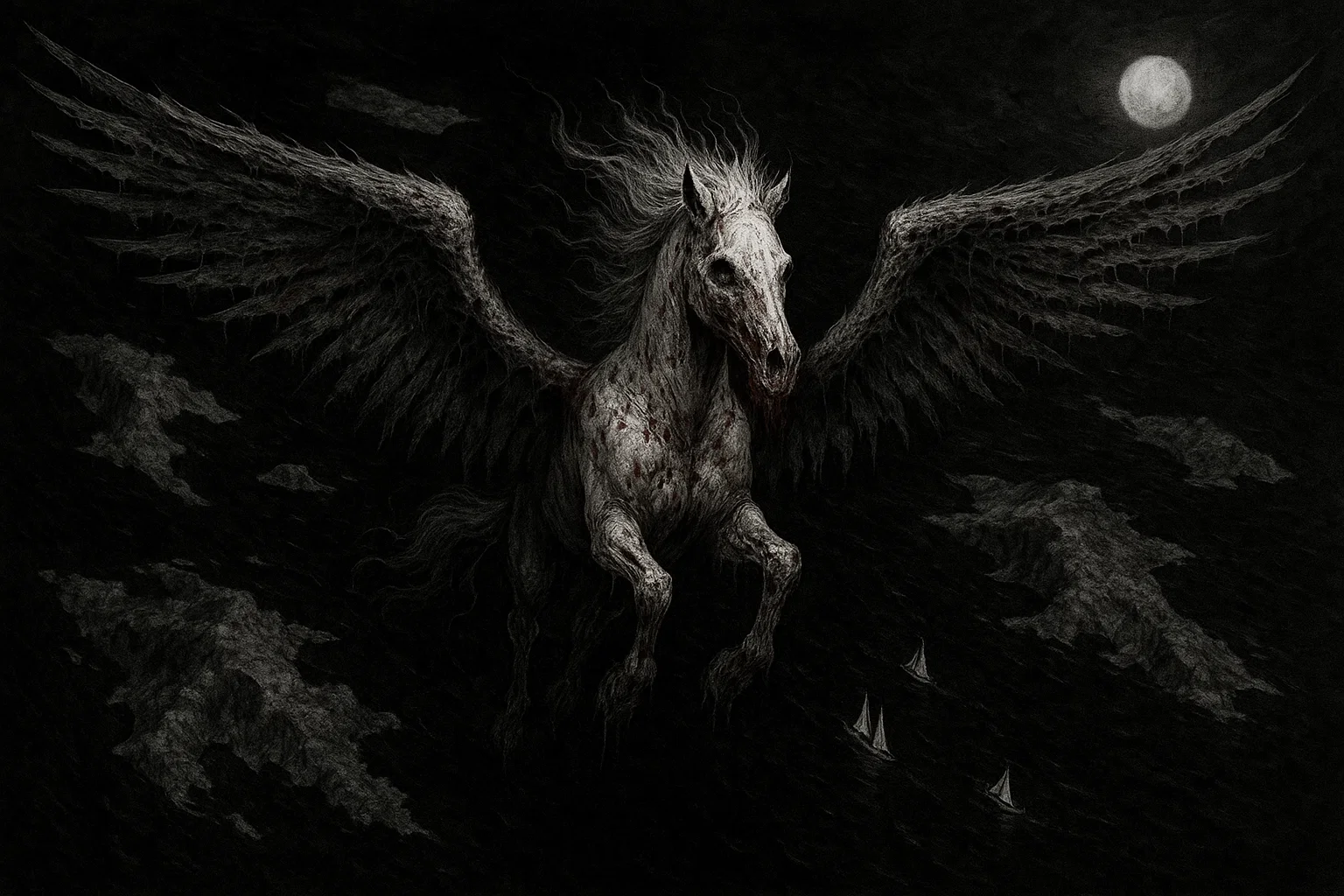The Ohio State Reformatory was built between 1886 and 1910 to rehabilitate young, nonviolent offenders through education and labor. Over its 94-year operation, it housed 154,000 inmates.
However, the rehabilitation center faced many problems over the years. Overcrowding, violence, and despair claimed over 200 lives through disease, suicide, and murder.
Today, preserved as a historic site, it draws visitors for its film legacy in The Shawshank Redemption and relentless reports of paranormal activity, from shadowy figures to screams, cementing its status as one of America’s most haunted prisons.
Summary
Key Takeaways
| Attribute | Details |
|---|---|
| Name | Ohio State Reformatory (also known as Mansfield Reformatory or OSR) |
| Location | 100 Reformatory Road, Mansfield, Ohio 44905, USA |
| History | Tragic events include a 1930 fire at Ohio Penitentiary displacing violent inmates here; over 200 deaths from influenza, tuberculosis, suicides like hangings and self-immolation, murders such as guard Frank Hanger’s 1932 beating death, and a 14-year-old boy’s basement beating in the early 1900s; riots, escapes, and solitary confinement abuses peaked in the 1940s-1970s. |
| Type of haunting | Intelligent, Residual, Apparitions, Ghosts (General), Shadow People |
| Entities | Unnamed 14-year-old boy in basement; guard Frank Hanger; inmate James Lockhart (self-immolation victim); warden Arthur Glattke and wife Helen (shot accidentally in 1926); shadowy malevolent figures; possible nurse Helen in library. |
| Manifestations | Disembodied voices, footsteps, cell doors slamming, cold spots, apparitions, shadow figures peeking from cells, physical touches or pushes, choking sensations, growling, church bells, rose perfume or cigar smells, objects moving, nausea in solitary areas. |
| First reported sighting | Early 1900s, inmate reports of ghostly tucking-in by unseen woman in cellblocks. |
| Recent activity | 2024: During Parapsycon event, investigators heard loud unexplained stomps and growls in cellblocks; ongoing ghost hunts report EVPs and shadow figures in basement and Hole. |
| Open to the public? | Yes, via guided historic tours, self-guided audio tours, and paranormal programs including ghost walks, hunts, and overnight investigations through the Mansfield Reformatory Preservation Society website. |
What Is the Ohio State Reformatory Haunting?
The haunting at the Ohio State Reformatory is tied to the allegedly troubled spirits of former inmates and staff who are said to be stuck in a cycle of suffering due to the prison’s harsh history.
Originally built with the intention of reforming prisoners, the Ohio State Reformatory quickly turned into a place of overcrowding and cruelty. This has led to many paranormal experiences, with visitors reporting feeling pushed or receiving answers to their questions through electronic voice phenomena (EVPs).
Witnesses’ stories include sightings of young boys who seem to be fleeing from shadows, guards walking the empty hallways, and the faint smell of roses—believed to come from the warden’s late wife.
One particularly eerie location is solitary confinement (known as “The Hole”), where many visitors reported feeling dizzy and having trouble breathing. Possibly suggesting that something dark may still linger there?
The more recent discovery of over 215 unmarked graves nearby has also added to the belief that souls are trapped in this location.
You May Also Like: 15 True Ghost Stories You Shouldn’t Read Alone After Midnight
Ohio State Reformatory Haunted History
Construction of the Ohio State Reformatory started in 1886 on the site of Civil War Camp Mordecai Bartley. Here, soldiers used to train in harsh conditions (including corporal punishments and disease outbreaks).
The Ohio State Reformatory was designed by architect Levi T. Scofield in the Romanesque Revival style to evoke moral uplift—like a Gothic cathedral for the soul. The center opened partially in 1896 for first-time offenders aged 16 to 30. The goal? To help rehabilitate them through education, faith, rather than punishment.
Yet reform ideals crumbled quickly. By the 1920s, Ohio’s prison system strained under population booms, forcing the facility to accept violent transfers (including survivors of the 1930 Ohio Penitentiary fire that killed 322 inmates in Columbus).
These “worst of the worst”—murderers, rapists, lifers—overwhelmed the 2,200-capacity design, leading to riots, stabbings, and unchecked brutality. Cells meant for inspiration became tombs of despair, with raw sewage flooding floors and tuberculosis ravaging blocks.
Tragedies mounted relentlessly. In 1926, warden Arthur Glattke’s wife, Helen, accidentally shot herself in their on-site quarters while cleaning a revolver.
Guard Frank Hanger met a savage end on October 2, 1932, beaten with an iron bar during a botched escape by 12 inmates. Two of the perpetrators, Merrill Chandler and Chester Probaski, faced the electric chair in 1935.
A 14-year-old boy, incarcerated briefly in the early 1900s when the prison still housed mostly juveniles, suffered a fatal beating in the basement, his cries allegedly replaying even today.
Multiple suicides plagued the East Cell Block (the world’s largest free-standing steel cell tier at six stories).
For example, the inmate James Lockhart—bullied for lesser crimes—doused himself in turpentine and ignited in 1948, burning alive to escape torment. Another example is Larry Haymer, who hanged himself in 1970, just days before transfer.
Over 200 deaths—falls from catwalks, slit throats with smuggled scissors, self-poisoning with toxic fluids—filled 215 anonymous graves on the grounds. Many others died from influenza epidemics in the 1910s.
On July 21, 1948, a violent riot started after the inmates were denied attendance at a baseball game. The riot quickly escalated into arson that damaged the chapel and admin block, injuring dozens.
Several inmates also managed to escape the prison. One of them was Philip Orleck, who, after his escape, murdered a family in 1959. He was eventually caught and sent back to the Ohio State Reformatory.
The Hole (the infamous solitary confinement within the Ohio State Reformatory) isolated over 100 men in pitch-black cells, driving them insane. Some came out catatonic, others never at all.
By the 1970s, federal lawsuits denounced the inhumane conditions as violations of the Eighth Amendment. However, the Ohio State Reformatory wasn’t closed until December 31, 1990, after several former inmates won their lawsuits against the state of Ohio.
The Mansfield Reformatory Preservation Society saved the building in 1995 for $1, transforming it into a tourist attraction.
You May Also Like: The 9 Most Haunted Hotels in Arkansas You Can Still Visit
Ohio State Reformatory Ghost Sightings
| Date | Location | Witness(es) | Description | Evidence/Outcome |
|---|---|---|---|---|
| Early 1900s | East Cell Block | Multiple inmates | Unseen woman tucking blankets at night | Inmates peeked to see sheets tighten mysteriously; reports consistent across blocks |
| 1926 | Warden’s Quarters | Prison staff | Helen Glattke’s accidental shooting | Rose perfume and apparitions reported immediately after; ongoing scents noted |
| 1932 | Admin Hallway | Guards during escape | Frank Hanger beaten to death | Shadowy guard figure seen post-mortem; EVPs captured growling |
| 1948 | East Cell Block | Fellow inmates | James Lockhart self-immolation | Smell of burning flesh; choking sensations on visitors |
| 1959 | Basement | Cleanup crew | 14-year-old boy’s beating death | Small shadow fleeing; malicious presence felt |
| 1970 | Solitary (The Hole) | Transfer guards | Larry Haymer hanging | Breathing down necks; nausea and cold spots |
| 1980s | Chapel | Late staff | Woman sighing/crying on pews | Shadows entering from cell blocks; disembodied laughter |
| 1990s (post-closure) | Library | Early tourists | Nurse Helen apparition | White Rain shampoo scent; footsteps to bathroom |
| 2000s | Basement | Paranormal investigators (Ghost Adventures) | Boy’s shadow and running figure | Video of orbs; EVPs of pleas for help |
| 2010s | Cell Blocks | Tour groups | Pushes and cell slams | Scratches on arms; audio of doors without source |
| 2020s | Overall | General visitors | Disembodied voices, cigar smoke | Recent hunts yield growls, bells; physical interactions |
The “Tucking Woman”
In the early 1900s, inmates reported an odd feeling that their bedsheets were being tucked in, as if someone were adjusting them for comfort. Men from different areas of the prison described how unseen hands would pull the loose fabric tight against their mattresses.
One inmate was particularly terrified when he saw his blanket being pulled snugly without anyone there to do it—too deliberate to be just a draft.
At first, the guards didn’t believe these stories. Still, they began to hear from tough inmates who whispered about a mysterious “night nurse,” even though there were no female staff members around at night.
This strange activity continued for years, creating a mix of fear and comfort among the prisoners. Some found the ghostly gestures soothing, like a mother’s care, while others were scared and worried it meant trouble was coming.
In the 2000s, paranormal investigator Greg Feketik explored the prison and recorded faint sounds—whispers saying, “Rest easy, child”—that matched unusual energy readings near the cells where the sheets had been disturbed.
You May Also Like: Is My Home Haunted or Just Old? How to Tell the Difference
Helen Glattke’s Apparitions in the White Room
Since the tragic death of Helen Glattke in 1926, visitors to the Ohio State Reformatory’s White Room have reported sensing her presence through a distinct smell: a lovely rose perfume that seems to appear out of nowhere amid the building’s age and decay.
This phenomenon was first noticed by tour groups in the 1990s, who described feeling a wave of floral scent, followed by the sound of footsteps on the old, creaky floors. Some have claimed to see doors gently open to empty rooms.
One visitor—a volunteer from a preservation society—felt a gentle touch on her shoulder, as if someone were guiding her, just before the perfume grew stronger and she found herself inexplicably in tears.
Paranormal investigators have further fueled the stories. During a 2012 episode of Ghost Adventures, cameras captured the image of a ghostly woman in a lace dress gliding by, fading into mist.
Audio recordings captured ghostly voices pleading for their “boys” and mentioning a son named Arthur, suggesting a connection to her children she left behind.
Molly Cabrera, who coordinates programs at the site, shared a memorable experience from 2017 when the temperature suddenly dropped while a group was gathered. A scent resembling both rose perfume and a familiar shampoo filled the room, leading one skeptic to murmur, “She’s here.
By 2024, participants at paranormal events began to notice that the rose perfume often appeared just before cold spots in the room and glowing orbs near Helen’s old vanity mirror, as if she were still preparing for an everlasting reflection.
The “Basement Boy”
The basement of the Ohio State Reformatory is a dark, eerie place, filled with old stone walls and forgotten items. It’s said to be haunted by the ghost of a 14-year-old boy who was once an inmate there.
Since the facility housed young offenders, people have reported seeing a small, shadowy figure darting away from flashlight beams, almost as if the child is running from something terrifying.
In the 1950s, workers cleaning up the area first caught a glimpse of this strange sight—a tiny figure that seemed to scurry along the walls. Decades later, in the 2000s, a team from Ghost Adventures captured this ghost on their night-vision cameras.
Viewers could see a blurry shape that appeared to be a boy moving around, often accompanied by eerie sounds, such as muffled cries and a voice urging, “Run!”
In 2023, a guest who was exploring the basement felt a chilling grip around her ankle, as if someone was trying to trip her. Other visitors have noticed strange heat patterns that look like small footsteps and shadows that seem to stretch unnaturally, giving the impression that something is following them.
You May Also Like: Gilles Garnier: Was This French Hermit a Real Werewolf?
The Shower Room Ghosts
Since the tragic suicides of the 1940s, many have reported strange experiences in the East Cell Block’s shower room.
In 2008, a paranormal investigation team noted a tour guide suddenly gagging as if someone were squeezing her throat, while flashlights inexplicably flickered and went dark one after another. People have captured ghostly voices on recordings saying things like “Tight… no air,” which matched bizarre energy readings in the area where the noose used to hang.
Accounts of strange happenings have increased over the years. In a 2019 episode of the show “Destination Fear,” one participant started coughing and developed red marks on her neck that looked like rope burns; these disappeared by morning.
Strange shadows have been seen around the drains, resembling human shapes peering out from the walls, and electronic devices frequently malfunction, producing eerie bursts of laughter—possible remnants of the tormentors who caused so much pain in this place.
Theories
The hauntings at the Ohio State Reformatory have sparked endless debate, blending historical trauma with unexplained phenomena. Skeptics attribute reports to infrasound from vast halls, inducing unease. At the same time, believers cite EVPs and videos as proof of afterlife unrest.
Residual Energy from Traumatic Events
The walls of the reformatory tell a story of pain and suffering that is over a hundred years old. They seem to hold onto the memories of tragic events, as if they were tape recordings of the last moments experienced there.
For instance, the tragic fire in 1948, when a man named Lockhart lost his life, causes people to feel a sense of panic and fear, almost as if they can hear the flames and screams again, especially when they listen to footsteps reminiscent of past chaos.
Historians have noticed similar phenomena at places with a lot of trauma. After a devastating fire in 1930, many survivors arrived, bringing with them a deep sense of sorrow, which seemed to blend into the very stones of the building.
Some experts, like Greg Feketik, believe that the unique properties of the limestone used in the building might absorb emotional energy and then release it as faint echoes. However, it raises questions as to why these eerie feelings become stronger during full moons or on the anniversaries of tragedies.
Intelligent Spirits Seeking Resolution
Many people believe that the Ohio State Reformatory is home to ghosts who linger there in search of justice or closure.
Some have reported feeling gentle touches from a spirit known as the tucking woman, as if she’s offering comfort. Others describe feeling sudden pushes from a guardian figure known as Hanger, suggesting that these spirits are looking out for visitors.
Some theories suggest that old, damaged electrical wiring in the building could help spirits communicate, leading to eerie sounds recorded on devices that seem to say things like “Help me.” Additionally, during renovations, the smell of cigars linked to a man named Arthur Glattke has been noticed, which many believe signifies his ongoing care for his orphaned sons.
You May Also Like: The 12 Creepiest Halloween Horror Stories Ever Told
Psychological and Environmental Influences
Skeptical views suggest that the ghost stories surrounding the Ohio State Reformatory are more about our minds reacting to the atmosphere than real hauntings.
When people visit, their expectations from the famous Shawshank movie put them on edge and make them more likely to notice anything unusual. The old, crumbling buildings, with their peeling paint and giant, empty spaces, can make visitors see things that aren’t really there—like faces hidden in the rust.
Sounds we can’t hear, created by wind moving through the building’s old structures, can lead to feelings of unease, nausea, and even ghostly visions.
Research on other supposedly haunted locations shows that about 70% of reported experiences can be linked to suggestion. The stories told during tours about the more than 200 deaths in the prison set the stage for people to hear things—like loud bangs or growls—that might not actually exist.
Ohio State Reformatory vs Other Haunted Locations
| Haunted Location | Type | Key Tragedies | Manifestations | Public Access |
|---|---|---|---|---|
| Eastern State Penitentiary, Philadelphia, PA | Prison | Executions, solitary madness | Disembodied laughs, shadow cells | Tours, ghost hunts |
| Alcatraz Island, San Francisco, CA | Prison | Failed escapes, suicides | Cries from D-Block, cold spots | National Park tours |
| West Virginia Penitentiary, Moundsville, WV | Prison | 94 executions, riots | Stone-throwing poltergeists, apparitions | Haunted house events |
| Old Charleston Jail, Charleston, SC | Jail | Hangings, Lavinia Fisher murder | Whips cracking, cell shakings | Historical tours |
| Moundsville Penitentiary, Moundsville, WV | Prison | Torture in “The Alamo,” deaths | Shadow figures in yards | Overnight investigations |
| Trans-Allegheny Lunatic Asylum, Weston, WV | Asylum | Lobotomies, overcrowding deaths | Screams, wheelchairs moving | Day/night tours |
| Waverly Hills Sanatorium, Louisville, KY | Hospital | Tuberculosis deaths, “body chute” | Shadow orphans, EVPs | Paranormal weekends |
| Pennhurst Asylum, Spring City, PA | Asylum | Abuse scandals, 10,000 patients | Cries in tunnels, apparitions | Haunted attractions |
| Rolling Hills Asylum, East Bethany, NY | Asylum | 1,000+ unmarked graves | Shadow figures, Nurse Emmie | Ghost hunts, events |
| Eloise Asylum, Westland, MI | Asylum | Lobotomies, patient mistreatment | Voices in morgue, cold spots | Tours, investigations |
| Alton State Hospital, Alton, IL | Asylum | Experimental treatments, suicides | Apparitions in wards, poltergeist | Limited access tours |
| Danvers State Hospital, Danvers, MA | Asylum | Ice pick lobotomies, fires | Residual screams, orbs | Apartments (view exterior) |
| Byberry Mental Hospital, Philadelphia, PA | Asylum | Exposed abuses, patient deaths | Shadow people, disembodied yells | Demolished, site visits |
| Essex County Hospital, Cedar Grove, NJ | Asylum | Overcrowding, electroshock | Footsteps in tunnels, apparitions | Ruins exploration |
| Topeka State Hospital, Topeka, KS | Asylum | Sterilizations, patient neglect | Claw marks, shadow chases | Closed, private hunts |
| Forest Haven Asylum, Laurel, MD | Asylum | 400+ child deaths | Cries from playground, orbs | Demolished, memorial site |
| Willard Asylum, Ovid, NY | Asylum | Forgotten patients, suitcase graves | Whispers in attics, apparitions | Tours of artifacts |
| Athens Lunatic Asylum, Athens, OH | Asylum | Lobotomies, cemetery suicides | Ice cream apparitions, EVPs | University campus tours |
| Preston Castle, Ione, CA | Reformatory | Warden’s wife murder, abuses | Piano playing, child shadows | Event venue, tours |
| Sheboygan Asylum, Sheboygan Falls, WI | Asylum | Patient mistreatment, isolation | Cold spots, disembodied voices | Haunted house tours |
You May Also Like: Bigfoot Sightings Across America: Full 50-State Guide
Is Ohio State Reformatory Haunting Real?
The Ohio State Reformatory is one of the places in the United States with the most recorded paranormal energy.
People have reported hearing ghostly voices from empty cells and noticing unusual temperature changes in areas where executions took place. These signs suggest that there may be more than just echoes from the past—perhaps deep sadness left behind, taking shape as chilling shadows.
However, some people remain skeptical. They argue that the spooky atmosphere of this historical site might lead visitors to imagine things based on suggestions or even feel cold drafts that feel like ghostly touches. Scientific investigations, including studies on sound and ghost-hunting tours, have found patterns that seem too consistent to dismiss as mere tricks.
In the end, whether the spirits of former inmates wander the halls or it’s simply memories that send shivers down your spine, the Reformatory challenges us to confront its intriguing history. If you’re up for it, take a visit; you might discover something haunting, whether real or imagined.







